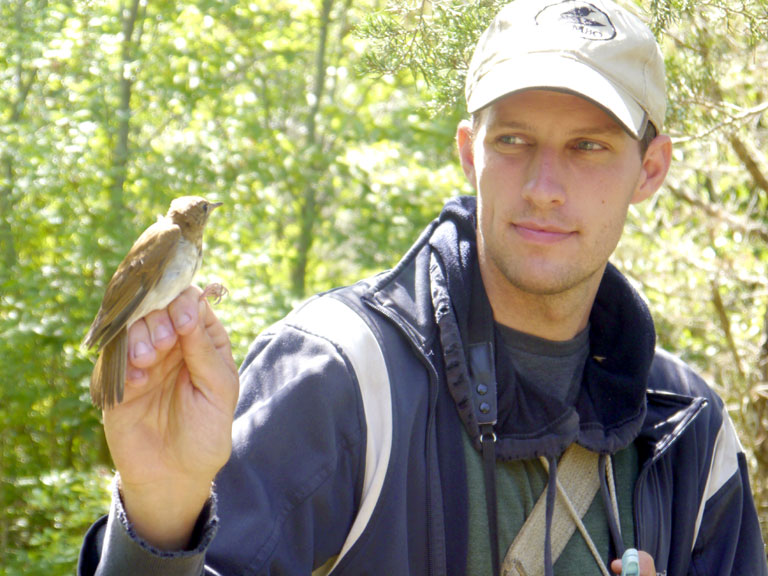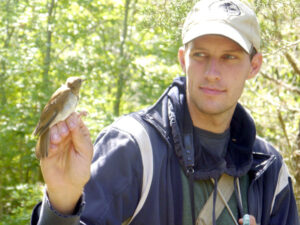County News
For the birds

South Shore observatory re-opens its doors
The Prince Edward Point Bird Observatory (PEPtBO) was finally able to throw open its doors once again Sunday after being closed to the public for the duration of the pandemic. The event announcing the re-launch of PEPtBO welcomed Bay of Quinte MPP Todd Smith, Bay of Quinte MP Neil Ellis, Prince Edward County mayor Steve Ferguson, as well as many PEPtBO board members and volunteers. “While all of us humans have been grappling with the implications of this pandemic, bird life has gone on,” said Julie White, PEPtBO’s president who was delighted to welcome visitors once again. “Opening up PEPtBO to the public is especially exciting for us because we see our role as going beyond banding birds and gathering information,” she said. “We see ourselves as having an important role in public education, and so having demonstrations that are programmed for children, where we go to schools and the schools come here, is so important in building future leaders and advocates for the environment.”
White said birds continue to face accelerating threats from climate change and habitat degradation, especially during migration. “It’s as important as ever to gather long-term information on bird populations to enable us to monitor eco-health and track endangered species,” she said. “Being open again to the public is hugely important to us.” The event included a full demonstration of the banding process, including small group tours to the nets situated on-site, where a number of birds were retrieved by the bird banders and brought back to the station for processing. PEPtBO is located on the extreme south-east corner of Prince Edward County at the very end of Long Point Road, a stone’s throw from Point Edward Point lighthouse.

During a group tour of the birding nets at PEPtBO, bander-in-charge Phillip Mercier locates a veery in the nets.
MPP Todd Smith noted how the South Shore is the last undeveloped piece of shoreline on the north shore of Lake Ontario. “It’s one of the hidden secrets, although I think you are trying to put it on the map for more people to come down and see what’s going on here,” Smith said. “It’s such an important area and we have worked together to make sure we are protecting the South Shore and that’s why it’s such a priority for me to make sure we are protecting this piece of land which is home to so many different species.” MP Neil Ellis recalls coming to the facility three or four years ago when it opened and said he was amazed at the amount of birds that came through the site. “I would like to thank all of the volunteers, it’s about volunteering and seeing with nature and that is fantastic.”
Bander-in-charge, Phillip Mercier gave an upclose demonstration explaining the banding process from start to finish, on this occasion with a just-caught yellow warbler. He explained that when the birds are retrieved from the nets on the property, they are placed in cloth bags to keep the birds safe, where the bags ensure the birds stay calm until they can be processed. The bird is first identified and then it is banded. “Every bird has its specific band size that it will use to get banded,” explained Mercier. “This bird takes a size zero and it is a very tiny black-grey aluminum band that we have to open with our banding pliers.” When a bird is banded, it is held firmly with its leg and joint supported. “We put it in the thin side of the bird, turn toward the thick side and close the band.” Once the band is closed, they ensure it can rotate around the bird’s leg and that the closure is well secured so it doesn’t fall off the bird or get caught.
Mercier explained how the bird is held in a photographer’s grip, securing the back of its legs and holding down on the joint so the bird doesn’t move its leg or twist, where it remains safe and unharmed during the brief process. The banding process includes determining the age of the bird, something Mercier says they do by measuring the wing chord. “We open its wing and we are going to try to identify what plumage was retained or replaced, or what is uniform versus not uniform,” said Mercier. The sex of the bird is determined, along with how much fat it is carrying.
All the information gathered from the bird banding is put into a computer where among other things, they can learn about the longevity of a bird. Mercier said they have had blue jays at 10 or 11 years old, a common grackle at nine years, with the oldest oven bird reaching 11 years.
“With that information, we do population demographics, so we are looking at the difference in age between young birds and older birds and that will give us a lot of information on the survivorship of these birds through migration,” he said. While conservation is the main goal of the observatory’s studies, it also includes habitat management and risk assessment, and population, as well as the health of individual birds.
The health of a species is an indicator of how well a bird’s habitat is doing. “That’s how we can use birds as habitat management practices and habitat rehabilitation practices as well,” he said. “We use all the information on the birds we catch here for that sort of evaluation for population and health and population dynamics and that helps us determine how to conserve them.” He said yellow warblers will live five or six years, noting how every year they fly thousands of kilometres during migration. “It’s incredible to see how those birds are surviving and how long they can actually live.” Mercier said birds are very good macro indicators of habitat health and insect health. “It’s a good way for us to look at those kinds of effects by capturing the birds because it’s easier than any other estimation we would do.”
PEPtBO have banded over 200,000 birds to date. “Just this year alone, we are already up to 5,000 birds banded since spring, and we had a summer program where we banded about 900 birds and in the spring we had 3,500 birds, and we have had about 80 birds so far at least today,” he enthused. They are expecting to catch and band about 7,000 birds this fall, a number which is usually double the spring figure due to reproduction in the boreal forest. For more information on the Prince Edward Point Bird Observatory, to volunteer or to donate, please visit peptbo.ca.

Comments (0)